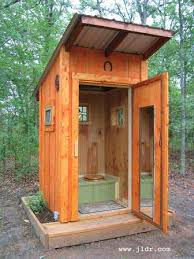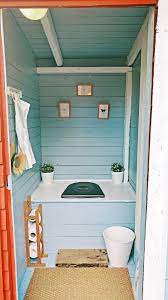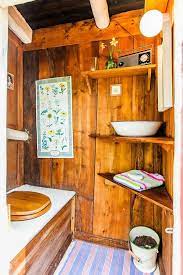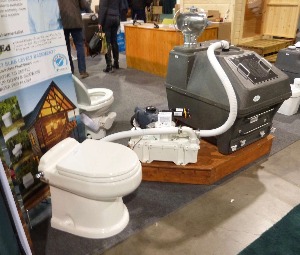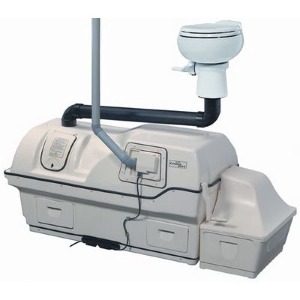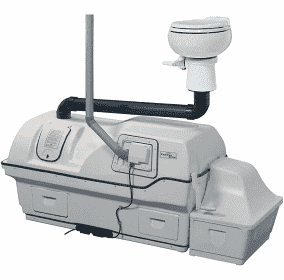Let's Talk Shit...
- Whispering Wind Ranches
- Feb 8, 2023
- 5 min read
Updated: Feb 11, 2023
Ok here we are, talking about something no one wants to think about... What to do with all the poo!? Here's where modern sustainability meets old world charm, the two can live side by side depending on your wants and needs but both bring back the same end. What do we do with the poo!?
In most modern homes, we are hooked up to the public sewer system, we flush, the waste goes out the drain, into some pipes beneath the street, mixes with all our neighbors waste, then travels down to the treatment plant. At the treatment plant, the liquids are seperated from the solids, the liquids treated with enzymes and chemicals and then released back into rivers, streams, and other waterways... just to... get this... be used as drinking water again! The liquids are treated for bacteria, viruses and minerals; but things like RX and OTC medications, hormones, chemicals, or other things people have been known to flush; those are not filtered.; they remain. YUCK! Meanwhile, the solids are laid out to dry and become really solid. Then they are either buried, used as fertilizer, or in some communities used for heat, and even burned for use at the treatment plant to generate power to run some of their equipment. For the most part, however, it’s burned off. Some areas have begun to recycle, using it more for local fertilizers and such. I like this kind of sustainability! On a homestead or off grid property, we use our own waste usually for fertilizer, but there's quite a few varied ways to get it there.
The Outhouse. An outhouse is a small structure, separate from a main building, which covers a toilet. The two most common types of outhouses are the vault privy, which houses waste in a holding tank below the outhouse, and the pit privy, which is simply a little house built over a hole in the ground. When properly built and maintained they can decrease the spread of disease by reducing the amount of human feces in the environment from open defecation. Open spread of human feces increases the risk of diseases such as colera, diarrhea, dysentery, hepatitis, polio, and typhoid. You can be very rustic with your outhouse and also pretty fancy. I like my outhouse fairly fancy. I'm not sure why, probably just in my head, but I like to do my business in comfort and style. I find it much more relaxing. Building an outhouse is easy but to get it not smelly, it must have proper ventilation. Depending on if you have a pit or a chamber, the outhouse will need a good clean out every now and again and this waste can be added to your farms compost pile, which should, by the way, be located pretty decent distance from your home structure. Compost piles often attract wild animals, and we don't want to be luring those into our living area, around our livestock, or our beloved pets. There will be a link incoming with steps on how to build a proper privy! It's a bit in depth for this blog to cover! But here is a few examples from plain to super fancy. We have several outhouses on our ranch in remote locations; of course, the ones I routinely use, closest to home, are the "nicer" ones. The one the guys use when out doing projects are you know, basic (at best).
Composting Toilets. Composting toilets have come a long way in recent years, that is for certain. You can now have composting in unit and also remotely composting. If your house lacks the plumbing to support a traditional flushing commode, a composting toilet could be the solution. This unusual kind of toilet uses aerobic bacteria to break down human waste and stows it in a neat, easy-to-remove package. The toilet separates liquids from solids, breaking down solid waste with organic materials and bacteria to become manure. Tbis particular type is called a "self-contained system". While you can dispose of this waste in a trash bag (preferably a composting bag), if local regulations allow, it can also be used in your garden, burned in a fire pit/barrel or dumped in your compost pile. Some of these composting toilets are waterless and some are ultra-low (one pint) flush. There are several of these types too which are pictured below.
Composting toilets that work with "split" or "central systems" are similar to a traditional toilet. They connect to a system of pipes that take the waste to a central bio-drum, hopper, or tank, which is where composting takes place. The hopper churns the waste, allowing it to break down while also venting the odorless gases. When the tank fills, empty it just like a self-contained toilet. A split compost toilet system is much more expensive than self-contained composters, as they require a hopper, usually installed below the toilet. The hoppers are a benefit because they significantly increase the amount of compost they can hold. They can be an attractive solution for permanent off-grid or eco-conscious homes, but the setup makes these composting toilets a poor choice for portability. These types of toilets also can be waterless or ultra-low flush (which uses a maximum of 1 pint of water to flush). In my opinion, for my office, home and studio use here at Whispering Wind Ranches, we use a split system remote composting toilet from Sun Mar (Sun Mar Centrex 3000). I think this style is the most like a traditional "on grid" home toilet, except it is ultra-low flush. Our toilet remotely composts under our home in a small utility room we built beneath our home. While you do need to maintain it weekly, by adding natural bacteria to help it compost, this model can sustain up to 5 adults living full time. We need to empty it only once per year with just the two of us. Emptying it is, on this model, pretty simple, and the compost looks pretty close to what you see in bagged potting soil you get from a landscape store. With any composting toilet, whether it is an outhouse, self-contained or split/remotely composting, you must be very creful the cleaners you use while cleaning your toilet and you never want to flush anything except for human waste and bio degradable paper. Cleaners like Peroxide, Lysol, germicides, spectricides and bleaches, kill the natural organisms needed to compost the waste. Make sure you use an all-natural product to clean your toilet. As a matter of fact, here’s (below) a recipe I will add for that!
and here is that recipe before we stop talking shit :D
Instructions
Fill a spray bottle with white vinegar.
Spray the inside of your toilet bowl with vinegar.
Sprinkle the baking soda like you would scouring powder into your toilet bowl.
Scrub the toilet bowl. You can use either a toilet brush or a damp sponge to do this. ...
Once you're done scrubbing, flush the toilet.









